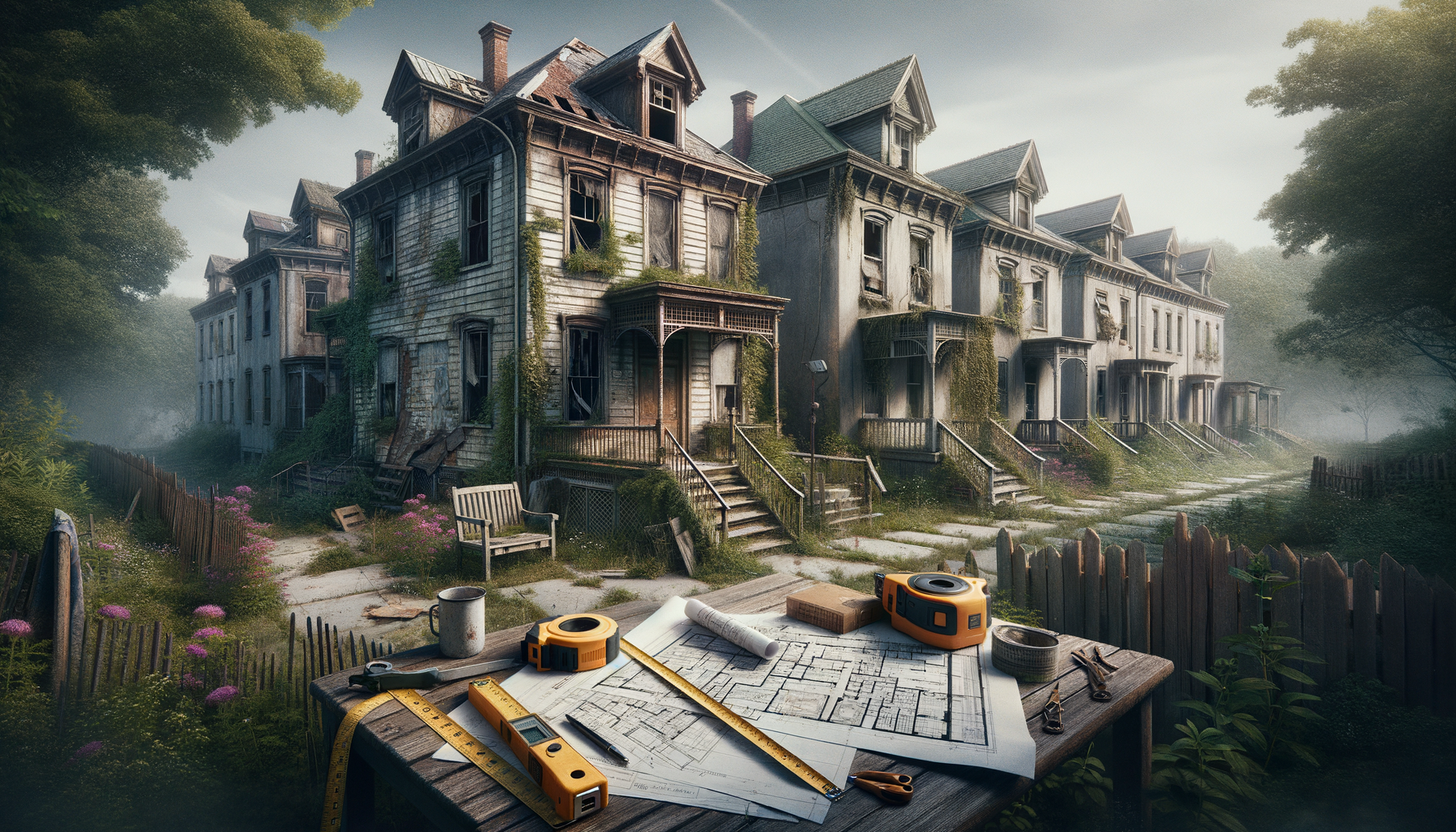Introduction to Abandoned House Hunting
The fascination with abandoned houses has grown significantly in recent years, transforming from a niche interest into a burgeoning trend. This interest is fueled by a combination of urban exploration and real estate opportunities, where individuals seek out these forgotten structures, not just for their historical allure but also for potential investment. Abandoned house hunting is often likened to treasure hunting, where each discovery holds the promise of untapped potential. The thrill lies in uncovering the stories behind these properties, understanding their architectural significance, and envisioning their future possibilities.
The allure of abandoned properties is multifaceted. For some, it’s the historical intrigue—each building a silent witness to bygone eras. For others, it’s the potential for financial gain, as these properties can often be acquired at a fraction of the cost of conventional real estate. However, the process is not without its challenges, requiring a keen eye for detail, a sense of adventure, and a willingness to navigate the complexities of legal and structural assessments.
The Tools and Techniques of Modern Explorers
Modern explorers of abandoned houses employ a variety of tools and techniques to locate and assess these properties. The initial step often involves extensive online research, utilizing platforms that list foreclosures, tax lien sales, and other distressed properties. Satellite imagery and mapping tools are also invaluable, allowing explorers to scout potential sites remotely before visiting in person.
Once a property is identified, explorers often delve into public records to uncover its history. This includes researching past owners, understanding any legal encumbrances, and assessing the property’s structural integrity. Tools such as metal detectors and thermal cameras can be used to assess the condition of the building, identifying hidden issues that might not be visible to the naked eye.
Engaging with local communities can also yield valuable insights. Neighbors or local historians may provide anecdotal evidence or historical context that enhances understanding of the property’s past. This combination of technology and human interaction forms the backbone of successful abandonment hunting, where the goal is not just acquisition but a deeper appreciation of the property’s story.
Calculating Renovation Costs and Potential Returns
One of the critical aspects of abandoned house hunting is accurately calculating renovation costs and potential returns. This requires a detailed assessment of the property’s current condition and a realistic estimation of the resources needed for restoration. Common considerations include structural repairs, electrical and plumbing upgrades, and aesthetic enhancements.
To manage costs effectively, many explorers create detailed renovation plans, often consulting with contractors and architects to obtain accurate quotes. It’s essential to factor in unexpected expenses, as older properties can harbor hidden issues that only become apparent during renovation. A contingency budget is a prudent measure to ensure financial viability.
The potential returns on investment are influenced by various factors, including the property’s location, historical significance, and market trends. Properties in emerging neighborhoods or those with unique architectural features often offer higher returns. However, the primary goal for many is not just financial gain but the satisfaction of preserving a piece of history and contributing to the revitalization of neglected areas.
Navigating Legal and Structural Challenges
Abandoned properties often come with a host of legal and structural challenges that require careful navigation. Legal issues can include unclear titles, unresolved liens, or disputes over property boundaries. It’s crucial for explorers to engage with legal professionals who specialize in real estate to ensure all acquisitions are above board.
Structurally, abandoned houses can present significant challenges. Years of neglect can lead to issues such as mold, pest infestations, and foundational damage. A thorough inspection by a qualified structural engineer is essential to identify these problems and assess the feasibility of restoration. This step is critical to avoid investing in a property that may be beyond repair.
Despite these challenges, the rewards of successfully restoring an abandoned property can be substantial. Not only does it provide a unique living space or investment opportunity, but it also contributes to the preservation of architectural heritage and the rejuvenation of local communities.
Conclusion: The Future of Abandonment Hunting
The trend of abandonment hunting is poised to grow as more individuals recognize the unique opportunities these properties present. As urban areas continue to evolve, the potential for discovering hidden gems in the form of abandoned houses remains significant. This pursuit combines elements of history, adventure, and real estate investment, appealing to a diverse audience.
For those considering entering this field, it’s essential to approach it with a blend of curiosity, caution, and commitment. The process is as much about preserving history as it is about financial gain. By embracing the stories these properties hold and investing in their future, modern explorers contribute to a broader narrative of urban renewal and historical preservation.
As more people engage in this unique form of exploration, the impact on communities and the real estate market will likely be profound, offering new opportunities for revitalization and growth.




Leave a Reply